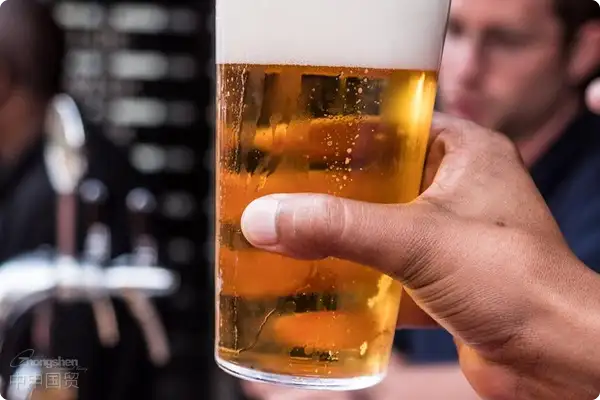- Shanghai Zhongshen International Trade Co., Ltd. - Two decades of trade agency expertise.
- Service Hotline: 139 1787 2118

Those Beer Agency Failures Ive Seen Over the Years
In 2018, a client excitedly imported German dark beer, only to find upon arrival that the Chinese back label lacked original wort concentration labeling, causing the entire batch to be stuck at customs for three months. Last year, another importer faced direct return risks when importing Belgian craft beer without noticing that alcohol content exceeding 11% required a separate license. Today, lets talk about the pitfalls you must avoid when considering importing beer.
Qualification Review: Is Your Entry Ticket Strong Enough?
Recently, a post-90s entrepreneur came to me with Taobao store data: Sis, my beer sales are booming on TikTok. Can I start importing directly? Reality is often harsher than ideals. Importing alcohol requires these hardcore qualifications:Import Representation(Must include alcohol business)
- (Apply 30 days in advance)Imported Food Consignee Registration (verifiable in the customs system)
- Alcohol Distribution License (canceled in some regions, but its advisable to confirm in advance)
- Alcohol content ≥11% requires
- Foreign exchange fluctuation locking plan
- Alcohol content ≥11% requires processingImported Alcohol Sanitary Certificate
- Organic certified beer requires providing overseas certification documents
The Devil in the Details of Customs Clearance Procedures
Just completed customs clearance for a shipment of Chilean beer last week, sharing the latest practical experience:
| Link | New changes in 2025 | Common mistakes |
|---|---|---|
| Chinese label filing | Added QR code traceability requirements | Missing Excessive drinking is harmful to health warning label |
| Health certificate | EU region requires accompanying heavy metal test reports | Certificate issuance date later than shipment date |
| Tax calculation | Provisional tariff rates may be adjusted | Neglecting the specific tax calculation rules for consumption tax |
Special note: Starting from 2025, pilot ports like Qingdao and Tianjin will implement inspection and immediate release mode, qualifying beers can achieve same-day customs clearance.
Market positioning dimensional reduction strategy
When handling Corona beer imports from Mexico for clients last year, we noticed an interesting phenomenon: coastal city consumers care more aboutProduction date freshness, while inland markets focus more onAnti-counterfeiting labels. Recommended solutions for beginners:
- Premium craft beer: Target male customers aged 25-35, promote through bar channels
- Mass-market brands: Focus on supermarket channels, strictly control near-expiry product turnover
- Specialty fruit beers: Create scenario-based marketing through KOLs on social platforms
Five fatal mistakes to avoid
Real case warnings from the past three months:
- Misunderstanding 1:Small trial batches dont need formal customs declaration → Caught by customs facing 3x cargo value fine
- Misunderstanding 2:Directly copy foreign packaging design → Cultural differences caused unsalable inventory
- Misunderstanding 3:Choose cheap freight forwarders to save costs → Improper temperature control caused beer spoilage
- Mistake 4:Skip distributors and contact breweries directly → Fell into MOQ trap
- Mistake 5:Consider deal done after signing contract → Failed to hedge against exchange rate fluctuations
Honest advice for beginners
Just declined a client wanting to represent Ukrainian beer last week—not because I wont take orders, but due to potential supply chain disruptions from local situation. Import agency is like brewing beer: malt, yeast, temperature—every variable needs precise control. Beginners should start with small batches of single products and find a reliableExport Representationas external brain, after all, this business earns money by avoiding risks.
Related Recommendations
? 2025. All Rights Reserved. Shanghai ICP No. 2023007705-2  PSB Record: Shanghai No.31011502009912
PSB Record: Shanghai No.31011502009912










